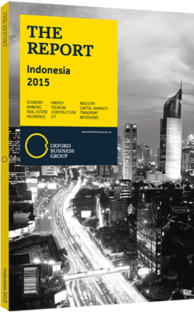Boosting Indonesian educational institutions' competitiveness and R&D in Indonesia
After President Joko Widodo’s administration took the reins of government in 2014, it implemented changes to the structure and mission of the education system. These changes aim to enhance the competitiveness of the workforce and increase the amount of research and development (R&D) activities conducted by students, researchers and entrepreneurs.
A New System
The restructuring reinforced the twotier system of education but changed its focus. Separating higher education from the (former) Ministry of Education and Culture, the reorganisation aimed to support a five-year plan to spur innovation and research in public and private universities and improving graduates’ competitiveness. Under the new system, basic and secondary education falls under the Ministry of Primary and Secondary Education and Culture (headed by Anies Baswedan), while higher education has merged with research in the Ministry of Research, Technology and Higher Education (led by Muhammad Nasir).
The reasoning for the change with regard to the higher education sector was unambiguous. With studies showing at least 5.6% of graduates – and possibly as high as one in four of new graduates – are unemployed, “higher education in Indonesia must produce qualified workers,” Nasir told the higher education publication University World News in February 2015. In addition, to better coordinate applicable technology and explorative research, “we have to produce much better researchers – world-class researchers, who must be able to support the advancement of industry in Indonesia”, the minister told the Antara news agency in October 2014. In a November 2014 interview, Nasir also pointed to the low number – “two or three” – of Indonesian universities in the top 500 of the 2013 World University Rankings. Within five years, Nasir aims for between 11 and 15 Indonesian universities to be listed on the top-500 list. In addition, the minister outlined plans to increase financial rewards for researchers as well as to implement a government-funded policy under which all universities will be required to produce nationally accredited journals. Such fine-tuning of the system aims to induce Indonesian universities to partner with the private sector to produce applied and marketable research and technology.
The structure of the new Ministry of Research, Technology and Higher Education will comprise five new directorate generals which will address science, technology and higher education institutions; scientific, technology and higher education resources; R&D; innovation; and learning and students. Responsibility for technical and vocational education (TVE) institutions has been moved over to the Ministry of Manpower and Transmigration. The government is placing more emphasis on TVE to address the shortfall of skilled workers.
Funding Shortfalls
Both education and R&D have experienced funding shortfalls in the past, and the amount of their funding in 2015 is so far uncertain. In 2014 the education sector was allocated Rp368.9trn ($30.5bn) and government spending on R&D was Rp8trn ($661.3m). In 2015 education sector spending was increased to Rp404trn ($33.4bn) – but this allocation was approved by legislators before President Joko’s inauguration. The amount of funds allocated to each new ministry is thus hard to discern. The 2015 budget (approved in 2014) allocated Rp41.4trn ($3.4bn) to the now-defunct Directorate General of Higher Education and Rp700bn ($57.9m) to the Ministry of Research and Technology, theoretically giving the new ministry Rp42trn ($3.5bn) in funding. Likewise, the former Ministry of Education and Culture was allocated Rp67.2trn ($5.6bn) in the 2015 budget, but Rp31.4trn ($2.6bn), or 46%, of that was apportioned to higher education, which has historically been among the most sizeable units in the ministry of education, comprising over 100 state universities and more than 3000 private higher education institutions. The result is that the exact allocation for the Ministry of Primary and Secondary Education and Culture is open to question. The president revised the budget after he took office, but changes made to spending were not immediately publicised.
You have reached the limit of premium articles you can view for free.
Choose from the options below to purchase print or digital editions of our Reports. You can also purchase a website subscription giving you unlimited access to all of our Reports online for 12 months.
If you have already purchased this Report or have a website subscription, please login to continue.

